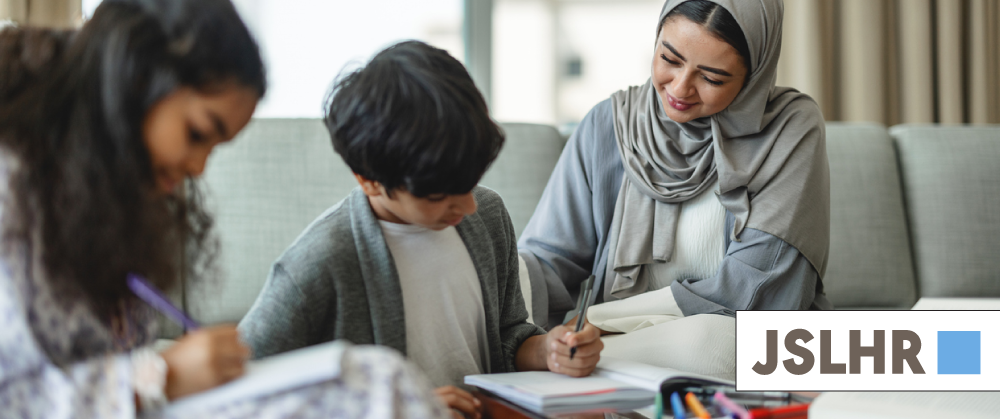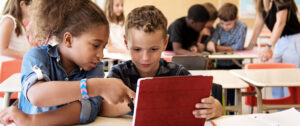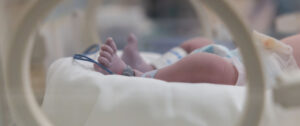Understanding language acquisition in languages other than English can help us better understand how children acquire language—and how language learning is affected by language disorders. The latest Special Issue in the Journal of Speech, Language, and Hearing Research (JSLHR) explores Arabic language development in children with and without developmental language disorder (DLD). Learn more about the issue from Guest Editors Elinor Saiegh-Haddad and Sharon Armon-Lotem below.
Typical Arabic Language Acquisition
The forum opens with an introduction from Saiegh-Haddad and Armon-Lotem discussing the articles and showing how research into Arabic has contributed to our knowledge of language acquisition. The first five articles in the forum address typical language acquisition in Arabic.
First, Watad et al. show how language acquisition is affected by both universal and language-specific effects through a study of consonant clusters. Next, Hashoul-Essa and Armon-Lotem test the efficacy of an assessment tool for lexical and morphosyntactic development for Palestinian Arabic speaking children in Israel. Then, Henkin-Roitfarb and colleagues monitor the development of inflectional verb forms, increasing our knowledge of typical language development in Palestinian Arabic.
The next two articles discuss the role of language and dialect in typical Arabic acquisition. Joubran-Awadie and Shalhoub-Awwad found that elementary school children demonstrated much greater morphological awareness for morphemes that varied little between spoken and written Arabic. Finally, Rakhlin et al. showed that despite substantial linguistic differences, colloquial Arabic speech skills were an important factor for children acquiring written skills in standard Arabic.
Arabic Acquisition in Children With DLD
The next three articles in the issue focus on Arabic acquisition in children with DLD, the most prevalent childhood language disorder. Mansour-Adwan and Khateb begin by studying language skills in children in kindergarten and first grade, highlighting the need for national screening and assessment for children with lower achievement scores.
Tallas-Mahajna and colleagues compare verb acquisition in children with DLD and typical language development, discussing DLD as a delay rather than a deviation from typical development. Then Alsiddiqi et al. examine the link between oral language and early literacy skills in children with typical language development and DLD.
Disglossia and Bilingualism
The issue concludes with four articles focusing on disglossia and bilingualism in Arabic. Shaban-Rabah and colleagues explore written and spoken language acquisition in students who are deaf and hard of hearing. Ghawi-Dakwar and Saiegh-Haddad compared word learning in children with and without DLD, finding that the difference in a how a word is spoken and written contributed to word learning difficulty.
An article by Hussein Mahamid and Saiegh-Haddad demonstrated that children with DLD showed differences in storytelling in both standard (written) and colloquial (spoken) Arabic. In the final article of the issue, Abed Ibrahim evaluated a standardized test that is used to assess bilingual Arabic–German-speaking children for DLD.
Universal Features of Language Acquisition
In their introduction, Saiegh-Haddad and Armon-Lotem write that the articles in the issue contribute to our understanding of Arabic language acquisition. At the same time, the research contributes to “a cross-linguistic understanding of language acquisition and its breakdown” (Saiegh-Haddad & Armon-Lotem, 2025, p. 1349).
We’d like to thank Drs. Saiegh-Haddad and Armon-Lotem for their work bringing this issue to JSLHR and our readers. You can hear more about the forum in their own words by playing the video below. When you’re done, be sure to read the full issue in JSLHR or explore the individual articles below.
Explore the Issue
Abed Ibrahim, L. (2025). Assessment of heritage language abilities in bilingual Arabic–German children with and without development language disorder: Comparing a standardized test battery for spoken Arabic to an Arabic LITMUS sentence repetition task. Journal of Speech, Language, and Hearing Research, 68(3S), 1569–1601. https://doi.org/10.1044/2024_JSLHR-23-00617
Alsiddiqi, Z. A., Stojanovik, V., & Pagnamenta, E. (2025). Early oral language and cognitive predictors of emergent literacy skills in Arabic-speaking children: Evidence from Saudi children with developmental language disorder. Journal of Speech, Language, and Hearing Research, 68(3S), 1505–1520. https://doi.org/10.1044/2024_JSLHR-23-00643
Ghawi-Dakwar, O., & Saiegh-Haddad, E. (2025). Word learning in Arabic diglossia in children with typical language development and developmental language disorder. Journal of Speech, Language, and Hearing Research, 68(3S), 1533–1551. https://doi.org/10.1044/2024_JSLHR-23-00618
Hashoul-Essa, L., & Armon-Lotem, S. (2025). The emergence and development of Palestinian Arabic lexicon and morphosyntax from 18 to 36 months: A communicative development inventory study. Journal of Speech, Language, and Hearing Research, 68(3S), 1382–1401. https://doi.org/10.1044/2024_JSLHR-23-00606
Henkin-Roitfarb, R., Uziel, S., & Ishaq, R. (2025). Development of verb inflectional complexity in Palestinian Arabic. Journal of Speech, Language, and Hearing Research, 68(3S), 1402–1423. https://doi.org/10.1044/2024_JSLHR-23-00722
Hussein Mahamid, B., & Saiegh-Haddad, E. (2025). The role of story mode in the narrative skills of children in Arabic diglossia: Comparing children with typical language development and developmental language disorder. Journal of Speech, Language, and Hearing Research, 68(3S), 1552–1568. https://doi.org/10.1044/2024_JSLHR-24-00013
Joubran-Awadie, N., & Shalhoub-Awwad, Y. (2025). The impact of verb inflectional distance on morphological awareness in Arabic diglossia: Insights from a longitudinal study (kindergarten to grade 3). Journal of Speech, Language, and Hearing Research, 68(3S), 1424–1440. https://doi.org/10.1044/2024_JSLHR-23-00456
Mansour-Adwan, J., & Khateb, A. (2025). The stability of linguistic skills of Arabic-speaking children between kindergarten and first grade. Journal of Speech, Language, and Hearing Research, 68(3S), 1468–1483. https://doi.org/10.1044/2024_JSLHR-23-00533
Rakhlin, N, V., Li, N., Aljughaiman, A., & Grigorenko, E. L. (2025). “Speech is golden”: The importance of colloquial Arabic for reading standard Arabic for beginning readers. Journal of Speech, Language, and Hearing Research, 68(3S), 1441–1467. https://doi.org/10.1044/2024_JSLHR-23-00522
Saiegh-Haddad, E., & Armon-Lotem, S. (2025). Arabic typical and atypical acquisition: Introduction to the special issue. Journal of Speech, Language, and Hearing Research, 68(3S), 1348–1354. https://doi.org/10.1044/2024_JSLHR-24-00803
Shaban-Rabah, S., Henkin, R., Stamp, R., & Novogrodsky, R. (2025). The acquisition of a diglossic language by deaf and hard of hearing students: Evidence from a sentence production task. Journal of Speech, Language, and Hearing Research, 68(3S), 1521–1532. https://doi.org/10.1044/2024_JSLHR-23-00542
Tallas-Mahajna, N., Armon-Lotem, S., & Saiegh-Haddad, E. (2025). The emergence of verb patterns in Arabic in children with developmental language disorder compared to children with typical development. Journal of Speech, Language, and Hearing Research, 68(3S), 1484–1504. https://doi.org/10.1044/2024_JSLHR-23-00558
Watad, O., Bat-El Foux, O., & Ben-David, A. (2025). Frequency and universal principles in the acquisition of word-initial consonant clusters in Palestinian Arabic. Journal of Speech, Language, and Hearing Research, 68(3S), 1355–1381. https://doi.org/10.1044/2024_JSLHR-23-00535







